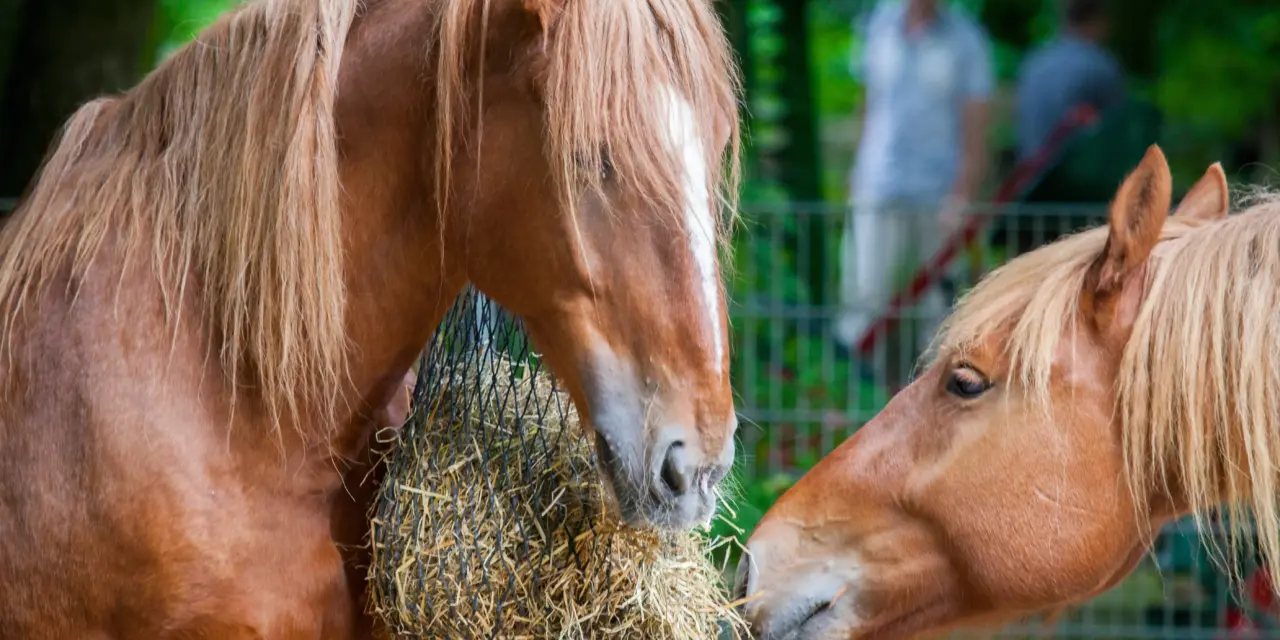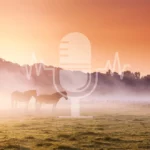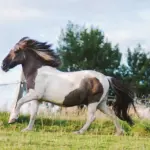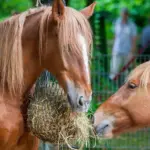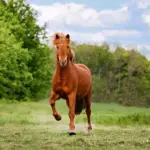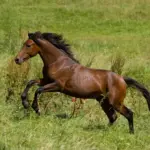Sustainably reducing excess weight in horses
Key Points at a Glance
- Radical feed restriction increases the risk of gastric ulcers, dysbiosis and stress – and, in the long run, worsens the metabolism.
- The yo-yo effect occurs when the body switches to energy-saving mode: reduced basal metabolism, muscle loss, stubborn fat deposits — and the pounds quickly return.
- Horses are natural trickle feeders – long periods without forage are counterproductive and pose health risks.
- Sustainable weight loss requires adapted forage, suitable yard management and smart training — not a crash diet.
- Not every bit of summer weight gain is a problem; some of it naturally drops off over winter as the horse’s energy needs increase.
- First assess correctly, then take action: use the Sanoanimal App to distinguish fat deposits from lymph build-up and choose the right measures.
Why crash diets are not the answer for horses
After a summer rich in grazing, many horses look rather well covered — so it’s understandable that the first impulse in autumn is often “let’s get the weight off quickly”. But drastically cutting feed rarely solves the problem. Horses are physiologically designed to consume fibrous forage for many hours around the clock. Forcing long fasting periods by heavily restricting hay raises the risk of gastric ulcers significantly. At the same time, the gut flora is more likely to tip into dysbiosis, which worsens feed utilisation and can fuel inflammation. Added to this is the stress caused by a lack of forage — and that stress doesn’t help with weight loss; it makes it even more difficult.
Yo-yo effect and “energy-saving mode”: what really happens in the metabolism when dieting
When a horse is underfed — for example, through reduced hay rations — the body lowers its energy expenditure. It starts to save energy because it senses a shortage. In addition, the horse’s metabolism is not designed for efficient fat breakdown. As a result, with a “eat half” type of diet it is more likely to lose muscle while holding on to fat reserves — just in case even leaner times are ahead.
When more feed is offered again after the diet phase, the body quickly refills its reserves — and often adds a little extra on top. This is the classic yo-yo effect. For horses, it means: short-term weight loss on the scales, but in the long run a slower, less efficient metabolism and faster weight gain. Year after year this cycle worsens; eventually the thyroid becomes disrupted, and the horse may end up with full-blown EMS or — if it continues even longer — develop Cushing’s symptoms.
Trickle-feeder physiology: why enforced periods without forage are risky
The horse is a natural trickle feeder. Its stomach produces acid continuously, and this needs to be buffered by fibre. Longer periods without forage mean less buffering, more acid in contact with the stomach lining, and therefore a higher risk of gastric ulcers. In addition, the steady flow of feed through the digestive tract — essential for a stable hindgut microbiome — is disrupted. In short: rather than letting horses go hungry, feed sensibly.
Sustainable strategy: quality, management, exercise
Healthy weight loss rests on three pillars:
- Adjust forage quality (offer plenty of low-nutrient hay instead of expensive, unnecessary supplements).
- Thoughtful yard and feeding management with continuous forage supply, a critical look at everything that goes into the feed trough, and no “snacking on the side” (a treat here, a carrot there…).
- Targeted training to increase energy expenditure and preserve muscle while promoting fat loss through activity.
This way the metabolism stays stable, the microbiome remains balanced, and the horse stays mentally content. After all, bad moods aren’t just something we humans get when we don’t get enough to eat.
Fat or lymph?
With horses, not every increase in girth is actually fat. Lymphatic build-up can make a horse look round without true obesity being present. Before you change the feed ration, check your horse’s status with the free Sanoanimal App. If the horse is lymphatic, the approach to therapy needs to be different from that for a horse carrying fat deposits.
In particular, horses that have previously been put on “reduction diets” and seemed to get bigger rather than slimmer often suffer from excess weight caused by lymph build-up. When the metabolism is brought back into balance, many owners are shocked to see how little horse is left once all the lymph has gone — because the muscle mass was effectively “starved away” through heavily restricted hay feeding.
Summer weight gain without panic – why winter helps out
Mild weight gain from summer grazing does not automatically mean action is needed. It is part of the natural rhythm for wild horses to put on weight over summer when plenty of nutritious forage is available. In winter, the energy demand for keeping warm increases, which — with a suitable forage strategy — supports a return to normal weight. Wild horses likewise tend to lose the extra pounds they gained in summer over the winter months.
The key is to manage the horse correctly: provide a steady supply of forage, choose the right forage quality, use slow feeders, and avoid unnecessary calorie sources (no matter how hard it is to resist filling the bucket with that tempting mash…).
You can’t feed a horse slim — you can only manage the weight.
- Podcast #3 – Autumn Pasture to Paddock Transition: How to Ensure a Smooth Transition from Grass to Hay - 11. September 2025
- Is my horse really overweight? - 8. September 2025
- Helping horses lose weight safely – why crash diets do more harm than good
- 8. September 2025

